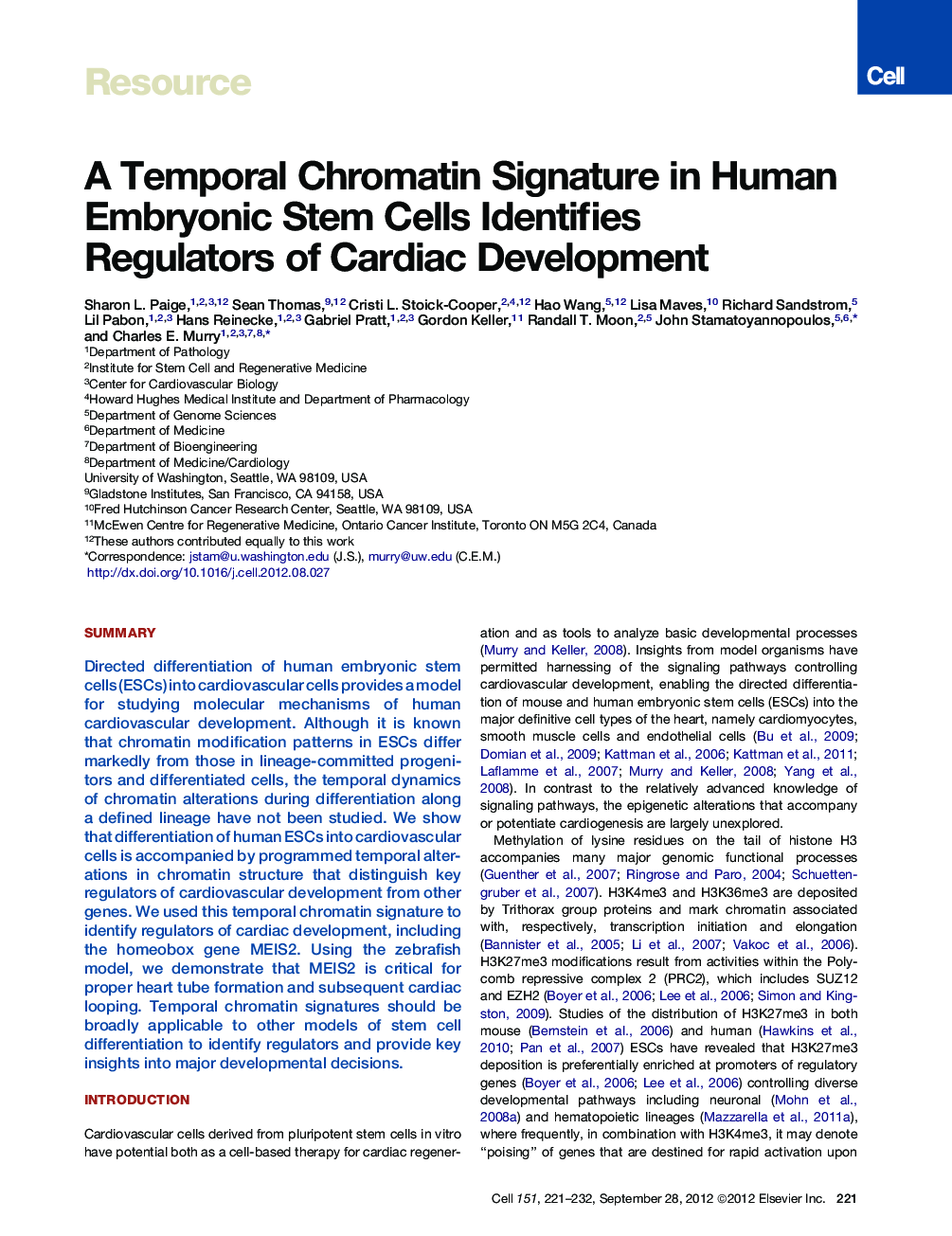| Article ID | Journal | Published Year | Pages | File Type |
|---|---|---|---|---|
| 2035760 | Cell | 2012 | 12 Pages |
SummaryDirected differentiation of human embryonic stem cells (ESCs) into cardiovascular cells provides a model for studying molecular mechanisms of human cardiovascular development. Although it is known that chromatin modification patterns in ESCs differ markedly from those in lineage-committed progenitors and differentiated cells, the temporal dynamics of chromatin alterations during differentiation along a defined lineage have not been studied. We show that differentiation of human ESCs into cardiovascular cells is accompanied by programmed temporal alterations in chromatin structure that distinguish key regulators of cardiovascular development from other genes. We used this temporal chromatin signature to identify regulators of cardiac development, including the homeobox gene MEIS2. Using the zebrafish model, we demonstrate that MEIS2 is critical for proper heart tube formation and subsequent cardiac looping. Temporal chromatin signatures should be broadly applicable to other models of stem cell differentiation to identify regulators and provide key insights into major developmental decisions.
Graphical AbstractFigure optionsDownload full-size imageDownload high-quality image (408 K)Download as PowerPoint slideHighlights► Genome-wide chromatin modification dynamics during lineage-specific differentiation ► Chromatin modification dynamics distinguish structural from regulatory genes ► A temporal chromatin signature predicts regulators of cardiac development ► Temporal chromatin signatures can identify regulators of other cell fates
